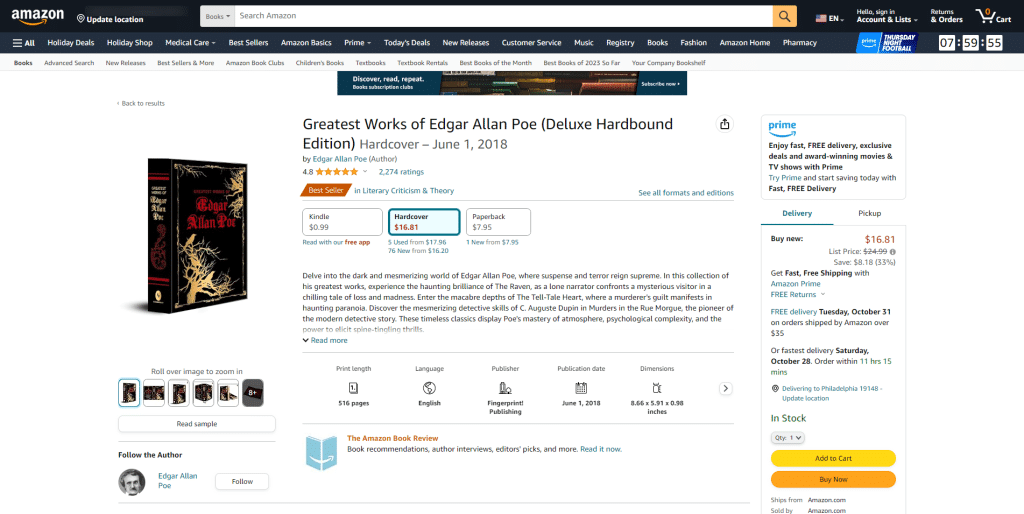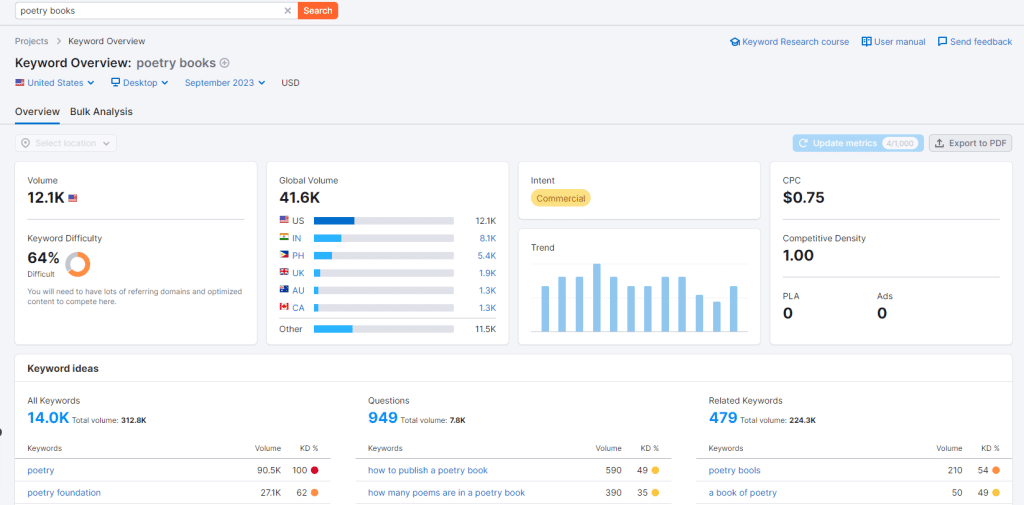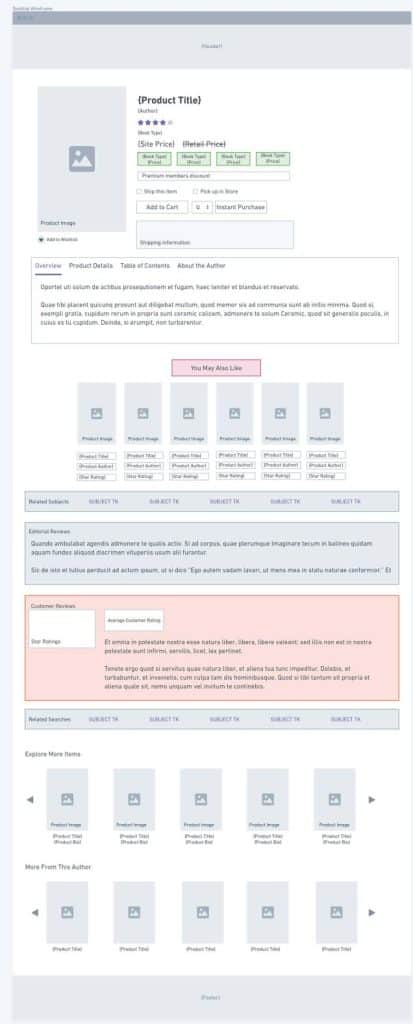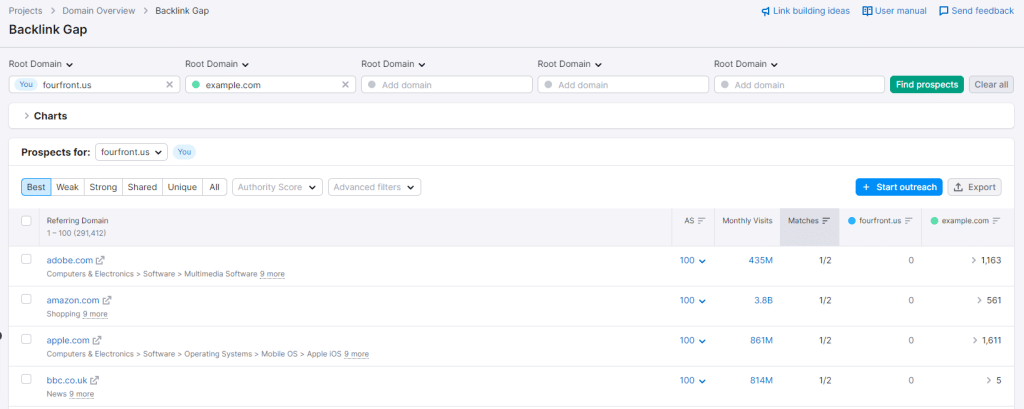SEO is incredibly important to the field of e-commerce. It helps play a pivotal role in increasing the visibility of your products within the organic search results of Google and other popular search engines.
Why is e-commerce SEO important? It provides your products visibility in search results for the 8.5 billion searches every day in Google.
What is E-Commerce?
So what is e-commerce, actually? E-commerce, or “electronic commerce,” is the buying (and selling) of goods, services, or products via the internet.
Estimates predict the global e-commerce market is expected to total $6.3 trillion (yes, trillion) in 2023 and total more than $8.1 trillion by 2026. In the US alone, e-commerce is expected to eclipse the $1 trillion mark in 2023.
And it’s not just the dollars spent – it’s also a massive shift in consumer buying habits. According to Oberlo, analysts expect 218.8 million digital buyers in the US in 2023; this number is expected to hit 230.6 million by 2026.
So yeah – that’s a lot of sales.

Facilitating all these online purchases are a variety of e-commerce platforms. Some of the popular e-commerce platforms include Shopify, Adobe Commerce (formerly known as Magento), and WooCommerce, as well as build-your-own-website platforms like Squarespace, Wix, and Weebly.
Each platform offers its own set of capabilities, pros, and cons. You may have your own unique considerations (keep reading for more on that), so you’ll want to do extensive research before selecting a platform that best fits your needs.
Why Optimize Your E-Commerce Site?
There are approximately 6.3 trillion reasons (hint: $$$) why optimizing your e-commerce site is worth it.
But if those numbers aren’t convincing enough for you, then look at it this way: according to HigherVisibility, 53% of website traffic comes from organic search. And one other fun statistic: 46% of product searches begin on Google.
In short: if you aren’t optimizing your e-commerce website for search engines like Google, you are absolutely missing out on a crucial piece of your potential customer base.
On-Page SEO Strategies for E-Commerce
What does it mean to optimize your website for e-commerce SEO? It means improving your website to increase the search visibility of your e-commerce website. There are multiple approaches to optimizing your website, including various on-page SEO and technical SEO strategies.
- On-page SEO means making on-page (usually front-end) improvements to your page to improve the relevancy of the page (or website) for users and search engines alike;
- Technical SEO means making technical improvements (usually back-end) that improves the crawlability or indexability of your website
Let’s dive into the on-page SEO strategies first.
Keyword Research
All good e-commerce SEO strategies, especially when optimizing for search engines, begins with keyword research.
It’s important to think through your keyword targeting strategy to answer questions like: what are my customers searching for? How are they searching for my product(s)? What keywords are they searching for in Google to find my product(s)?
Fortunately, there are a plethora of tools to support your keyword research, including popular tools like Semrush, Ahrefs, Keywords Everywhere, and more. Shameless plug: if you want to skip the research process, check out my curated list of the best keyword research tools for SEO.

How can you select keywords to target in your e-commerce SEO strategy? Start by answering some of the questions I previously mentioned, and put yourself in your customers’ shoes. How would I search for my own product(s)? What would a customer type into Google to find my product(s)?
More than that, it’s important to think of other considerations your customer will have. If your store sells custom socks – how are customers supposed to wash their socks? These types of searches, also known as long-tail keywords, are perfect blog opportunities (like How to Wash Custom Socks) and help support your overall e-commerce strategy.
Content Development
Content development is a crucial part of any e-commerce SEO strategy.
Strong content helps to answer user questions, provide valuable decision or selection support information to users, and improve the relevancy of your webpages to search engines. A strong content strategy can help support all phases of the buying journey for your customers, from their initial search for your product to getting ongoing additional information (like the ‘How to Wash’ example mentioned earlier) and establishing brand loyalty.
Content development is a multistep process that includes:
- Content research. Good content is researched What are your customers searching for and what information do you need to provide? And thinking one step ahead – what do your customers not know they need information about, and how are you providing that information as well?
- Content writing. Write content that helps answer those questions. This can include content such as brand information, product descriptions, brand resources, blog posts, FAQs, and more. Informational content can be especially valuable for funneling users deeper into your website and supporting their decision to ultimately make a purchase.
And one additional piece of unsolicited advice: write for your users, not the search engine. The biggest mistake you can make in SEO is writing for search engines. Write content for your user: anticipate their needs, provide useful information, and let Google sort out the rest.
User Experience (UX) Design
User experience is another valuable consideration for your e-commerce SEO strategy. Sure, you can bring tens of thousands of visitors to your website – but without a strong user experience, it’s unlikely to turn into paying customers.
It’s especially important that key pages, especially your Product Display Pages (PDPs), have a strong user experience.
Core Web Vitals
Core Web Vitals is a Google initiative to help quantify user experience. Per Google, “Core Web Vitals is a set of metrics that measure real-world user experience for loading performance, interactivity, and visual stability of the page.”
Core Web Vitals is measured using three main metrics:
- Largest Contentful Paint: How long does it take the largest element on the page to load?
- First Input Delay. How long does it take for the browser to begin processing a user event (like clicking a link, tapping a button, using a JavaScript-based asset, etc.)?
- Note: Interaction to Next Paint (INP) will be replacing FID in March 2024. INP measures the latency between interactions for all interactions.
- Cumulative Layout Shift. How much do individual page elements shift or move during the page load process?
These scores (each with their own defined quantitative benchmarks) help Google “measure” user experience and separate good user experience from bad user experience.
Supporting Assets
Assets such as product details (think product dimensions, weight, material, etc.), social proof (reviews from other real customers), images, videos, and more are all valuable to enhancing the customer buying experience to turn them from website visitor to customer.

Remember: it’s always important to optimize your website with the target user in mind.
Link Building
Link building is really an off-page SEO strategy, but because of its importance, we’ll mention it here, too.
Link building, or link earning, is the process of earning links to your website from third-party websites. Link building has evolved since the early days of SEO (we could write an entire blog post on this alone), mainly to separate bad and spammy link–building from more white-hat link–building strategies.
More advanced link-building strategies include things like:
- Guest posting. This involves utilizing relevant partner websites to share content on their respective websites that are relevant to their (and your) audience.
- Public relations efforts. PR is a great way to build brand recognition, and it usually comes with link earning in the process.
- Surveys are a great way to get more information about your audience and usually results in a worthwhile dataset that might be relevant to news outlets and/or other organizations.
- Infographics are all the rage and are a great shareable (and linkable) asset for your brand.
- Broken backlink remediation. This involves finding links that are trying to point to your website but are broken (either outdated links, mistyped, or otherwise human-error–produced links).
There are various link-building tools that will help with virtually any link-building strategy. Popular tools like SEMrush and Ahrefs can also provide information on where your competitors are getting their links via Backlink Gap Analysis tools.

This can help you identify where your competitors are getting links – and where your site isn’t. These typically are great link-building targets for your strategy.
Technical SEO Strategies for E-Commerce
Technical SEO should also be a strong consideration for your e-commerce SEO strategy. Technical SEO helps Google better understand, crawl, and index your website.
Let’s dive into a few essential technical SEO considerations when optimizing for e-commerce.
Mobile Optimization
If you’re not optimizing for mobile users (or users accessing your website from their phones), you’re missing out. More than 55% of website traffic comes from mobile devices.
There are a lot of considerations when optimizing for mobile – including user experience, load time, design, etc.
Fortunately, there are several tools that can help. Google’s Mobile-friendly Test can provide insights on mobile load times (note: this tool will be retired on November 30, 2023), as well as Google Chrome’s Lighthouse Audits and Google Search Console’s URL Inspection Tool.

Site Architecture
A strong site architecture goes a long way toward helping Google and users understand the organization of your website.
So, what is site architecture? Site architecture is how you organize the content of your website – from website resources to Product Listing Pages (PLPs) to Product Display Pages (PDPs). It’s how users (and Google) know where to look for various pages on your website without getting “lost.”
This example from SEMrush helps illustrate a strong website architecture:
This helps users (and search engines) navigate your website with a clear understanding of where they are within your website, and where they need to go to find another product category or website resource (like shipping information) or informational content from your blog.
Some helpful tools to help you think about your website structure include Screaming Frog (to understand your current structure) and Whimsical (to help illustrate a diagram similar to the example above).
Meta Data
You should also consider “low–hanging fruit” strategies like meta–data optimization. Meta data optimization includes optimizing various HTML elements relevant to SEO like title tags, page headers, and meta descriptions.
Title tags and page headers are used as a part of Google’s algorithm, while meta descriptions are not. So why are we optimizing them?
Title tags and page headers help to communicate relevancy signals, to both users and search engines. If you’ve ever skimmed an article (we all have, and let’s be honest, you might be doing that here, too), headers are critical to getting a “quick” understanding of the page content. Title tags help serve a similar purpose, telling users from the Search Engine Results Page (SERP) what your page is all about.
Meta descriptions, while not used by Google directly, can help clicks to your website from the SERP by offering enticing descriptions or information that would encourage a user to click on your result.
Here’s an example of a structured SERP listing:

We can also include encouraging calls-to-action within titles, such as “listicle” listings, promotional offers, etc.
Duplicate Content
Duplicate content can cause technical SEO issues for your e-commerce website, even if you don’t really realize it.
Here’s an example: you might be selling rain umbrellas. You have green, blue, and red rain umbrellas, and you might have a unique page for each.
Well – do you really need to have a unique page for each? Sometimes, yes – but there also might be cases where you might be confusing your users (and search engines) on which page is the most appropriate page to buy your product. This can cause a lot of problems with Google properly indexing your e-commerce pages, and as a result, Google will have trouble serving up the “correct” page to users in search results when they search for your product.
Tools like Screaming Frog and QueText are powerful tools to help identify duplicate (or near duplicate) content across your website or even other websites that list your product.
A strong content strategy (like we mentioned before) can help to avoid potential duplicate content issues. This might mean entirely unique, “fresh” content on product pages, or perhaps require a more dynamic approach or websites with thousands of products.
Sitemap Optimization
Sitemaps are an incredibly useful tool used by search engines that help identify all the pages on your website. The XML sitemap is a file that allows search engines to quickly “know” about all the URLs on your website for easier crawling and indexing.
This is particularly powerful for e-commerce websites with a wide variety of products. A dynamic XML sitemap can help Google know about newly added products or even removed products.
There are several tools to aid in generating and optimizing your sitemaps, including XML-Sitemaps and Screaming Frog.
Measuring Your Success
Like any good marketing strategy, it’s important to not only execute your e-commerce SEO strategy – but it’s imperative to measure its results.
This begins with increased visibility for your website and ultimately ends with increased sales.
Platforms like FourFront’s Target Keyword Tracking tool can help you measure your keyword visibility from any location around the world, and you can use other powerful third-party tools like Google Analytics (GA4) to measure on-site behaviors.
Closing Thoughts
Don’t forget that all of the above should be done with the user in mind. While e-commerce SEO is important for your business, don’t fall into the trap of doing “SEO” for search engines – always make site improvements that will have a positive impact on your potential customers.
And if you’re feeling overwhelmed (because let’s be honest, you’re probably balancing five other things right this very second), you can always reach out to our team of SEO experts to learn more about partnering with a seasoned e-commerce SEO team to support your SEO strategy.










